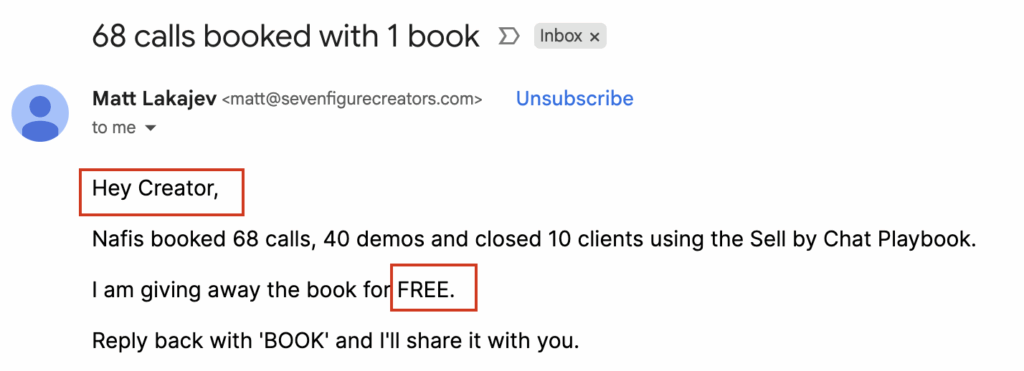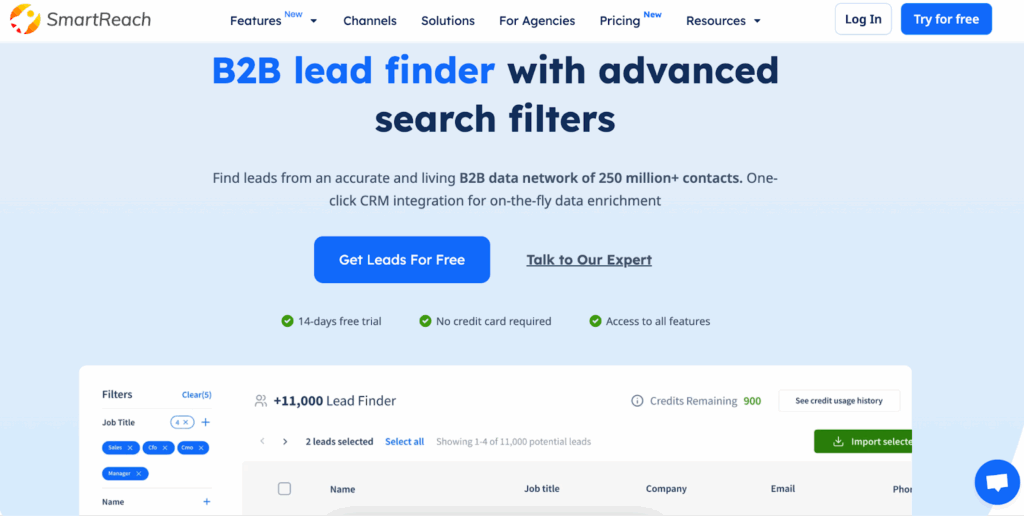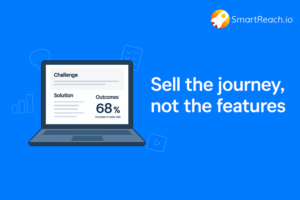Why Email Targeting Mistakes Hurts Your Outreach Campaigns
If your emails are landing in spam, it’s not always about the tech; it’s often about sending them to the wrong people.
Even the best email copy won’t work if it’s not relevant to the recipient.
When your messaging doesn’t match what your audience wants or needs, it hurts engagement and damages your email sender’s reputation.
Over time, this makes it harder for even your best emails to land in inboxes.
Sales leaders need to understand this: every poorly targeted email weakens your email program. But once you spot the issue, you can fix it and protect a channel that still delivers major results.
Why sending emails to the wrong audience leads to spam problems?
Targeting the wrong people isn’t just a marketing mishap. It’s the root cause of major email deliverability breakdowns.
Here’s how it spirals out of control and crushes your email outreach performance.
1. Recipients mark irrelevant emails as spam
- People get emails they didn’t ask for or care about, so they hit “Report Spam.”
- Even one spam report tells email providers: “This sender is a problem.”
- Every spam mark chips away at your sender reputation and affects the deliverability of future campaigns.
Wrong audience = higher spam complaints = lower deliverability.
2. No personalization? No engagement.
- Emails that feel generic like “Dear Customer” scream mass-blast.
- No relevance = low opens, low clicks, high deletions.
- Email providers track this and penalize senders with poor engagement.

Personalization isn’t a “nice to have”, it’s what keeps you in the inbox.
3. Your domain reputation takes a hit
- Your email domain works like a credit score, it builds or drops based on trust.
- A single bad campaign affects every other campaign sent from that domain.
- Even high-quality content won’t make it to the inbox if your domain is blacklisted.
One bad list can tank your entire email ecosystem.
4. Low relevance = Low ROI
- If the email content doesn’t match the recipient’s role or needs, expect zero engagement.
- For example, a CMO receiving emails about DevOps tools? Total mismatch.
- Poor targeting = wasted effort, time, and budget.
Sending to the wrong crowd doesn’t just kill engagement, it burns sales pipeline.
5. Purchased email lists trigger spam traps
- Buying or scraping lists often means you’re emailing traps, fake addresses used to catch bad senders.
- Hit one, and you’re flagged by spam filters immediately.
- These traps exist solely to blacklist senders who don’t follow best practices.
You’re not building a pipeline. You’re building your own blacklist.
Recommended Read: 7 Ways to build and grow a business email list from scratch
6. Inbox placement drops fast
- Spam complaints + low engagement = terrible inbox placement rates.
- Instead of showing up in the inbox, your emails go to:
- Spam folders
- Promotions tabs
- Or get blocked entirely
- Spam folders
Great content can’t work if the right audience don’t see it.
7. Content mismatches = algorithm red flags
- Email platforms (like Gmail, Outlook) track content vs. audience behavior.
- If a user downloaded a marketing eBook but receives a product pitch next, it’s a mismatch.
- These platforms know when your content doesn’t align with recipient interest.
Misalignment tells the algorithm: “This sender doesn’t segment well.”
8. Every spam complaint hurts
- Even a few complaints can signal email providers to start watching your sender behavior.
- Once you’re on their radar, filtering becomes stricter and hitting the spam folder becomes routine.
- And here’s the kicker: once your emails land in spam, it’s tough to get out, even if you fix your targeting later.
There’s no “reset” button. Trust takes time to rebuild.
📊 9. Low engagement metrics confirm the problem
- Wrong audience = fewer opens, clicks, replies.
- The algorithm sees:
- Emails are ignored
- Deleted without being read
- No interaction at all
- Emails are ignored
And then it decides to push your campaign emails to spam.
10. Machine learning spots bad patterns fast
- Email providers use AI & ML to detect user engagement patterns across millions of emails.
- If your campaigns consistently:
- Get low clicks
- Have high bounce/spam rates
- Show disengagement
- Get low clicks
- You’re flagged without warning.
By the time you notice a drop, the damage is already done.
11. Spam filtering becomes the default
- Once your sender reputation is shot, even your best emails don’t reach the inbox.
- Email platforms pre-filter your emails automatically.
- Even people who signed up may never see your emails again.
You’ve lost access to your audience, without them even unsubscribing.
12. You enter a downward spiral
- Bad targeting → Spam complaints
- Spam complaints → Automatic filtering
- Filtering → Worse email metrics
- Worse metrics → Even more spam filtering
You’re stuck in a loop that kills one of your most cost-effective channels.
Break the spam cycle with SmartReach.io
Use SmartReach’s built-in B2B Lead Finder to discover targeted prospects – by industry, role, company size, and more all inside your outreach platform.
No more guessing, no more wrong audience.

Try SmartReach.io free for 14 days.
How can I segment my audience to improve email engagement?
Avoiding the spam folder starts with smart segmentation.
Instead of blasting the same message to everyone, group your audience by factors like industry, role, company size, and buying stage.
A C-level exec doesn’t need technical how-tos, and a curious prospect isn’t ready for pricing.
Tailoring emails to the right context boosts engagement and keeps your sender reputation intact.
Know more on how to segment your audience from our detailed article.
Frequently asked questions about email spam problems
What spam complaint rate triggers deliverability problems?
Email providers start monitoring senders at 0.1% spam complaints and implement filtering at 0.3% complaint rates.
How can I fix email deliverability problems?
Fix email deliverability by cleaning your email list, improving audience segmentation, monitoring spam complaint rates, and gradually rebuilding sender reputation through high-engagement campaigns.
What causes emails to go to spam folders?
Emails go to spam folders primarily due to poor audience targeting, which leads to low engagement rates and spam complaints. When spam complaint rates exceed 0.1%, email providers begin filtering messages automatically.
What triggers an email to go to spam?
Emails can land in spam due to poor sender reputation, lack of authentication (SPF, DKIM, DMARC), using spammy language, linking to shady domains, or sending irrelevant content to the wrong audience.
Why is it wrong to send inappropriate emails?
Inappropriate emails frustrate recipients, lead to spam complaints, and damage your sender reputation. They also reduce trust in your brand and hurt your chances of building meaningful connections.
Why do my outgoing emails go to spam?
Your emails might be flagged due to issues like poor targeting, low engagement rates, blacklisted domains, missing authentication records, or sending too many emails too quickly.
What is the cause of spam emails?
Spam emails are typically caused by poor audience targeting, excessive use of promotional language, misleading subject lines, or sending emails without permission.
How to avoid sending emails as spam?
Focus on relevant targeting, personalize your content, avoid spam trigger words, authenticate your domain, and maintain a clean email list. Also, monitor engagement metrics and remove inactive users.
How do I fix my emails from being marked as spam?
Start by reviewing your email content and audience targeting. Set up SPF, DKIM, and DMARC. Use a warm-up strategy for new domains, and monitor deliverability using tools. Clean your email lists regularly and avoid sending to unengaged recipients.




